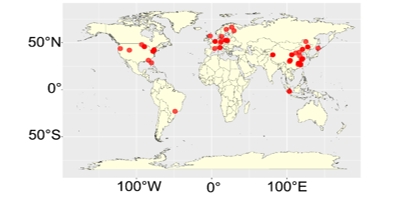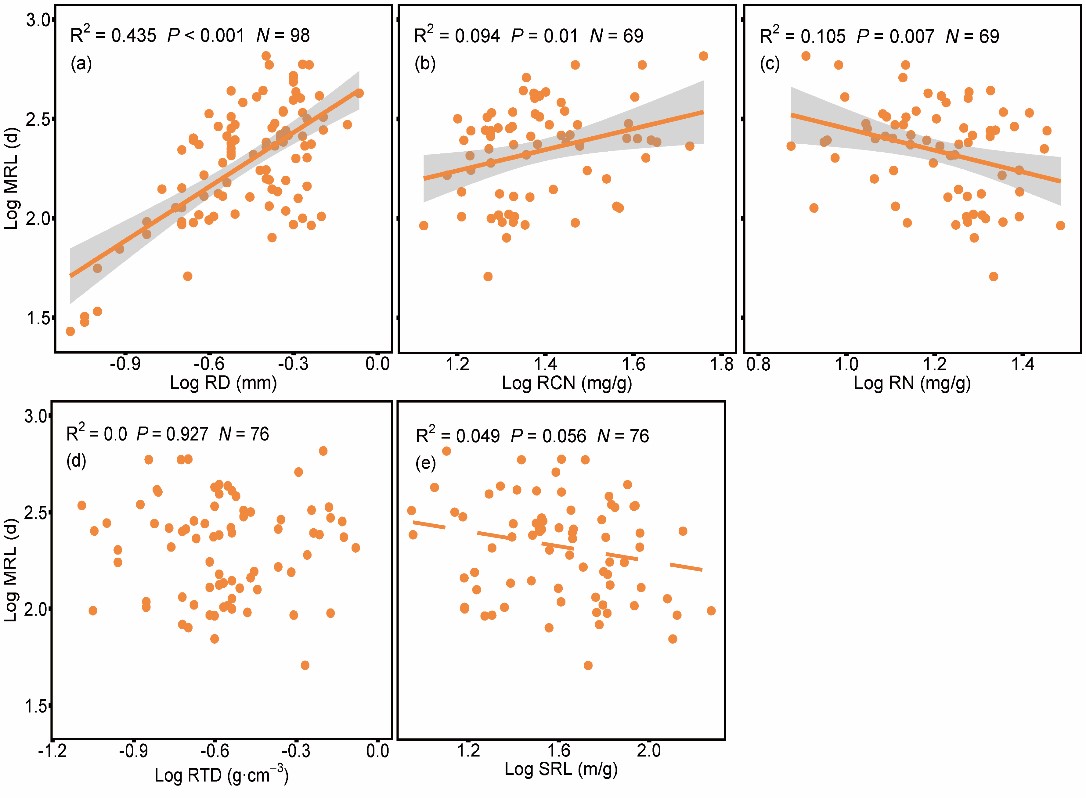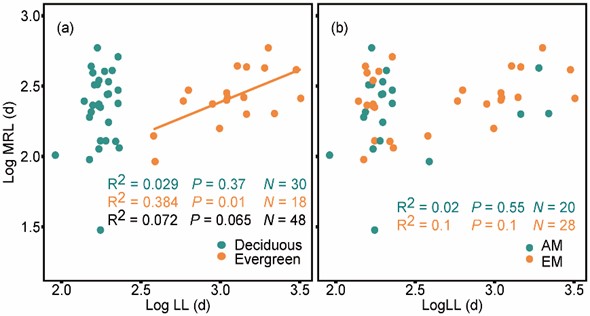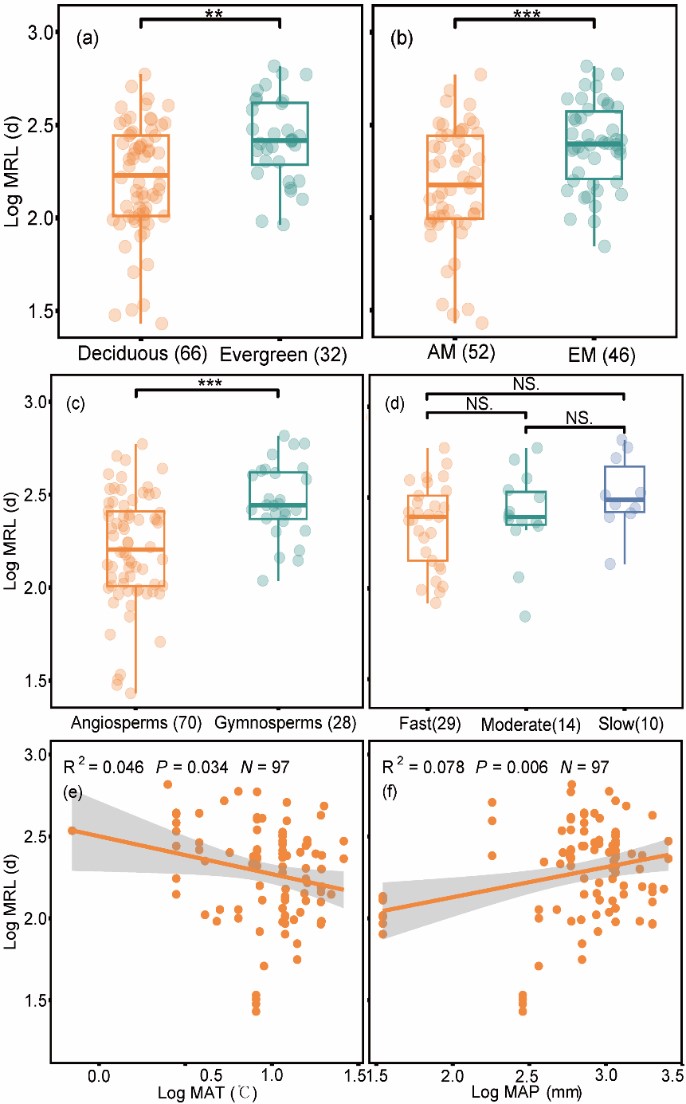Fine roots play a crucial role in the cycling of soil nutrients, water, and carbon. Variation in the lifespan of fine roots reflects how plants conserve and allocate carbon investments to support nutrient uptake. However, the relationships of fine root lifespan with environmental factors and other plant traits are still poorly known.
Dr. SUN Tao and his team from the Institute of Applied Ecology of the Chinese Academy of Sciences have compiled a comprehensive dataset of absorptive median root lifespan data. This dataset includes 79 woody species from 40 sites and helps to understand the drivers of fine root lifespan at a large scale. They demonstrate through meta-analysis that root diameter and root nitrogen regulate the lifespan of fine roots.

Fig 1. Geographical distribution of the study sites captured in 40 references (Image by SUN Tao).

Fig 2. Relationships between median fine root lifespan (MRL) and other root traits (a–e). RD: root diameter; RCN: root C: N ratios; RN: root N concentration; RTD: root tissue density; SRL: specific root length. N: The number of independent data points (Image by SUN Tao).
Moreover, they found fine root and leaf lifespan were globally unrelated, except among evergreen species, suggesting contrasting evolutionary selection between leaves and roots facing contrasting environmental influences above versus belowground. At large geographic scales, MRL was typically longer at sites with lower mean annual temperature and higher mean annual precipitation. Overall, these syntheses uncovered several key ecophysiological covariates and environmental drivers of fine root lifespan, highlighting new avenues for accurate parametrization of global biogeochemical models and the understanding of ecosystem response to global climate change.

Fig 3. Relationships between median fine root lifespan and leaf lifespan among evergreen or deciduous (a) and arbuscular or ectomycorrhizal forming (AM or EM) (b) species (Image by SUN Tao).

Fig 4. Median fine root lifespan distribution based on the environmental drivers mean annual temperature and mean annual precipitation (Image by SUN Tao).
This study was published in PNAS and it was supported by the National Natural Science Foundation of China, the National Key R&D Program of China, and the International Partnership Program of CAS, etc.
YUE Qian
Institute of Applied Ecology, Chinese Academy of Sciences
Tel: 86-24-83970317
E-mail: yueqian@iae.ac.cn
Web: http://english.iae.cas.cn